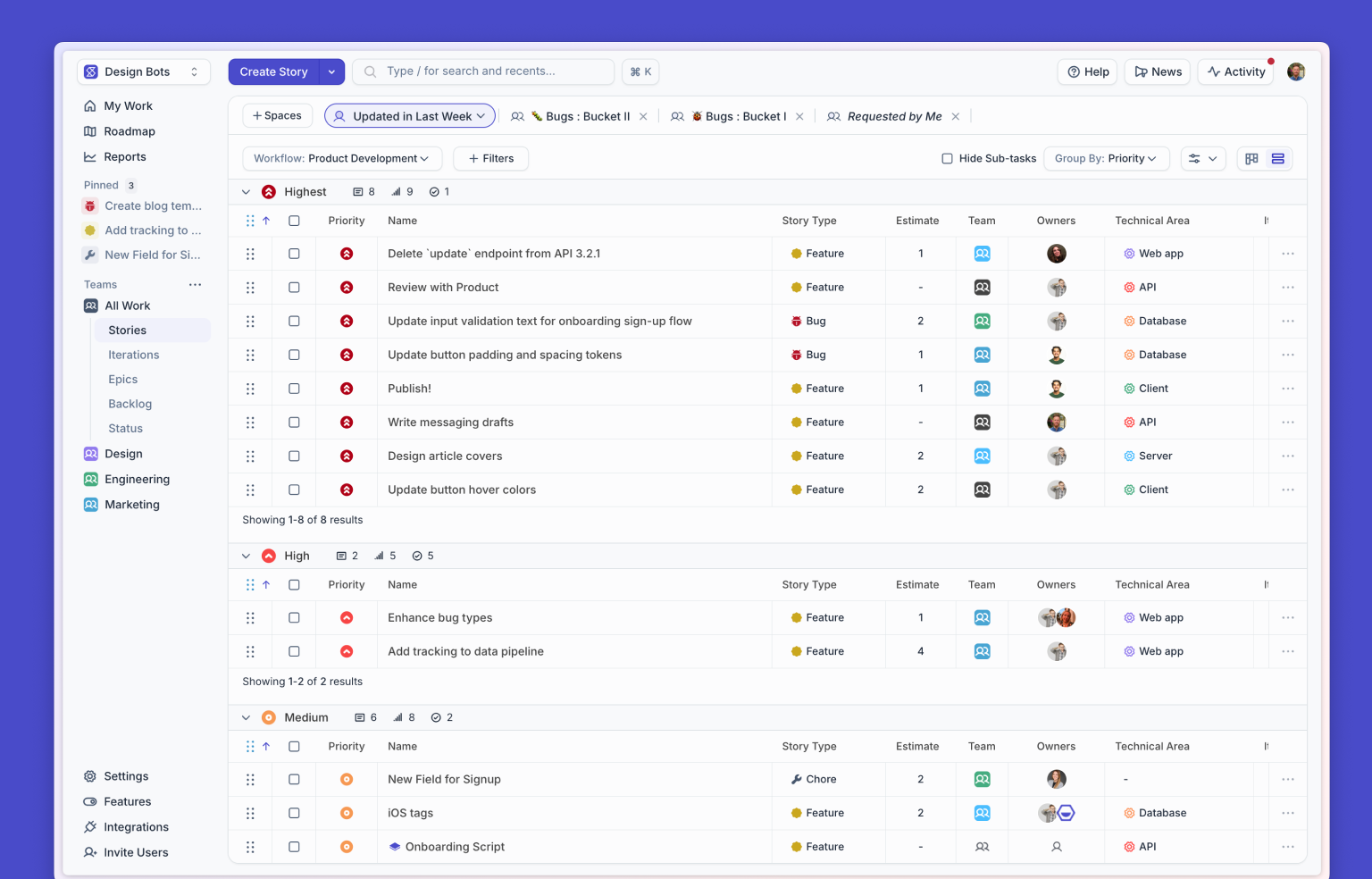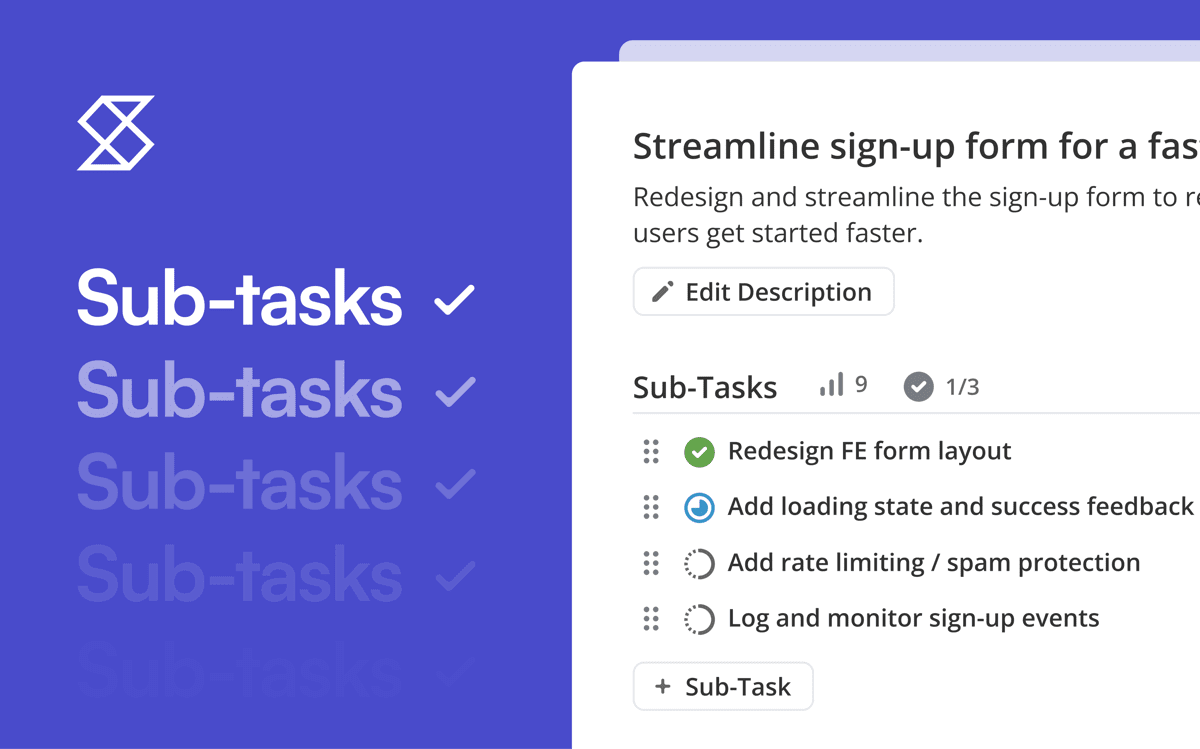Teams need more than a way to see what’s getting done, they need a way to understand why it matters.
That’s why Shortcut created Objectives, a more powerful evolution of how teams plan and measure progress. Objectives connect strategy to execution, linking the work happening day-to-day with the outcomes your business actually cares about.
If you’ve used Milestones before, this will feel familiar. Milestones are now Objectives, redesigned to show not just what’s moving forward, but how that work drives impact.
Why We Moved Beyond Milestones
Milestones were great for organizing delivery. You could group Epics, measure completion, and stay on top of timelines. But they stopped short of the bigger picture.
Objectives take that structure and extend it. They don’t just track what you’re doing, they track why.
Every team has two layers of focus:
- The tactical: what’s being built and shipped right now.
- The strategic: how that work moves the needle toward business goals.
Shortcut’s Objectives bring both layers together.
Two Types of Objectives: Tactical and Strategic
Shortcut Objectives come in two forms, designed to match how teams actually work: Tactical Objectives and Strategic Objectives.
Tactical Objectives: Where Work Lives
Tactical Objectives are for the teams building things: the engineers, designers, and PMs managing what’s actively in motion.
They answer questions like:
- What are we shipping this sprint or quarter?
- How far along are we?
- Who’s responsible for delivery?
Tactical Objectives make the delivery layer visible. They roll up Epics, show progress automatically, and let you see how the execution side of your product strategy is unfolding.
If you used Milestones before, this will feel familiar, but with more context, more control, and more flexibility.
Epics can now belong to more than one Objective, reflecting the way real work often supports multiple goals.
Strategic Objectives: Where Outcomes Live
Strategic Objectives zoom out. They connect the work to the results.
This is where leadership defines what success actually looks like: things like activation rate, retention, revenue, or performance improvements.
Each Strategic Objective includes Key Results, turning what used to be a static milestone into something measurable. Progress isn’t just a percentage of tasks done; it’s tied to real metrics that matter.
Bringing the Two Together
A Tactical Objective might say, “Launch new onboarding flow.”
A Strategic Objective might say, “Increase activation by 20%.”
They’re different views of the same mission and now, they live side-by-side.
This connection keeps everyone aligned: leadership sees outcomes, teams see execution, and everyone can trace the line between the two.
With Objectives, Shortcut becomes a system that shows how every Epic and Story contributes to real company progress.
Shortcut Objectives (Formerly Milestones)
Even though Milestones have evolved into Objectives, everything you’ve built still matters.
All your Milestone data, progress, and history are intact. They’re just living under a more powerful framework.
In short: Shortcut Milestones are now Objectives.They do everything Milestones did, and a lot more.
Why It Matters
Because alignment shouldn’t live in spreadsheets or slide decks. Objectives keep strategy connected to delivery in real time.
They make it possible to:
- See how today’s work supports quarterly goals
- Measure progress by outcomes, not output
- Keep everyone rowing in the same direction
It’s how Shortcut teams (and thousands of others) build products with purpose, not just progress.
FAQs About Shortcut Objectives
What happened to Shortcut Milestones?
Milestones have been replaced by Objectives. They now come in two types: Tactical and Strategic. They bring more flexibility, context, and measurable outcomes to the way teams plan and track their work.
What’s the difference between Tactical and Strategic Objectives?
Tactical Objectives track ongoing work and delivery, while Strategic Objectives track measurable outcomes tied to Key Results. You can start tactically and then elevate to strategic when you’re ready to measure impact.
Can I still access my old Milestones?
Yes. All existing Milestones have been automatically converted into Tactical Objectives. All your data, progress, and links remain intact.
Are Objectives the same as OKRs?
They’re related. Objectives in Shortcut can represent OKRs or any other measurable goal. Strategic Objectives make it easy to track progress toward outcomes right alongside your development work.
Can an Epic belong to more than one Objective?
Yes. Unlike Milestones, an Epic can now contribute to multiple Objectives. This reflects how work often supports more than one goal or initiative.
The Bottom Line
Shortcut Milestones have evolved into Objectives. Tactical Objectives help you track the work. Strategic Objectives help you measure the results. Together, they turn planning into progress, and progress into outcomes.
Learn more about Shortcut Objectives →

















%20(788%20x%20492%20px)%20(1).png)
.png)

